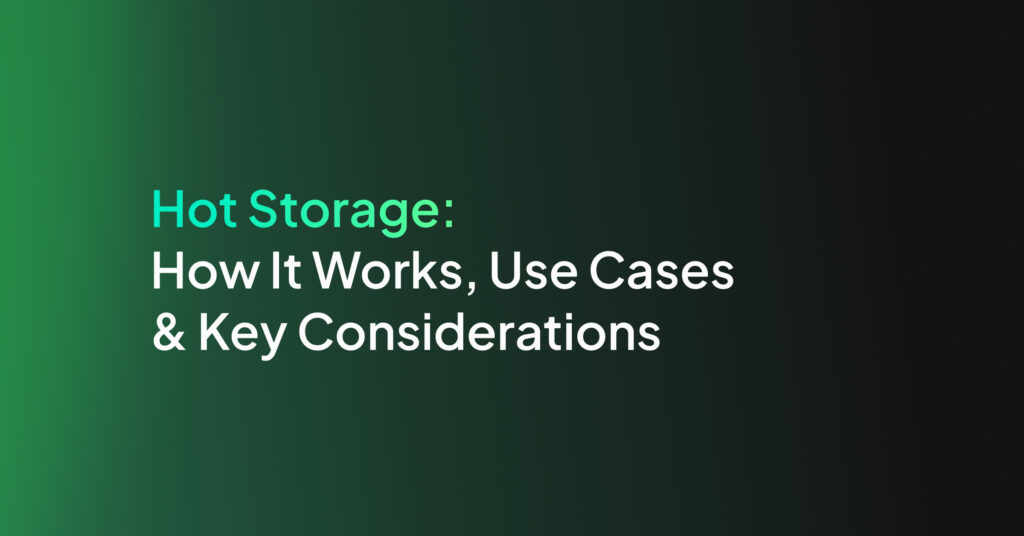Observability: Principles, Challenges, Capabilities & Practices

Benefits of Observability
Implementing observability across an organization’s IT infrastructure provides several benefits:
- Proactive issue detection: By continuously analyzing system data in real-time, patterns and anomalies can be detected early, allowing for proactive maintenance and improvement of system reliability. This reduces downtime and ensures smoother operations.
- Performance optimization: By analyzing logs, metrics, and traces, teams can identify performance bottlenecks and inefficiencies, leading to targeted improvements in system design and operation. Continuous performance monitoring ensures that systems remain responsive under varying workloads.
- Improved system reliability: Visibility into all parts of the system helps in identifying weak points and mitigating risks. By continuously monitoring and analyzing system behavior, potential failures can be anticipated and prevented, ensuring higher reliability and stability.
- Faster incident response: With real-time data collection and analysis, teams can swiftly identify the root cause of issues and initiate corrective actions. This rapid response capability minimizes the mean time to resolution (MTTR), reducing the overall impact of incidents on operations.
Monitoring vs Observability: What’s the Difference?
Monitoring focuses on tracking predefined metrics to ensure systems are running smoothly. It’s about alerting teams when something goes wrong. For example, CPU usage or memory consumption is monitored to ensure they stay within permissible limits. Monitoring is reactive, helping teams respond to issues as they arise.
Observability is about understanding why issues occur by analyzing the data generated by systems. It provides a view of system operations, enabling proactive issue detection and resolution. Observability goes beyond predefined metrics, incorporating logs, traces, and other data points to offer deeper insights into system behaviors. It’s a proactive and holistic approach to system management.
Learn more in our detailed guide to observability vs monitoring (coming soon)
How Do You Make a System Observable? The Key Principles
Observability involves collecting several types of data, including logs, metrics, traces, and UX data.
Logs
Logs provide a record of system events and actions. They offer context and historical data, making it possible to trace the sequence of events leading up to an issue. Effective log management involves collecting, parsing, and analyzing log data to extract meaningful insights. Logs provide the narrative of system behavior, critical for understanding complex issues.
Metrics
Metrics are numerical data points that represent the state and performance of various system components. Common examples include CPU usage, memory consumption, and request rates. Metrics provide real-time insights into system health, allowing for continuous performance monitoring and optimization.
Tracing
Tracing follows the flow of requests through different services and components, providing end-to-end visibility of system interactions. Traces help identify bottlenecks and performance issues by highlighting where delays occur. They are crucial for debugging distributed systems, where issues may span multiple services.
User Experience
User experience data provides insights into how end-users interact with the system, highlighting areas for improvement. This data can include response times, error rates, and user engagement metrics. Tools like real user monitoring (RUM) and application performance monitoring (APM) are commonly used. Understanding the user perspective helps inform targeted improvements.
Key Use Cases and Examples of Observability
Here’s a look at some ways in which observability can help improve system operations and user experience.
Performance Monitoring
Observability enables continuous performance monitoring, ensuring systems operate efficiently under varying workloads. By analyzing metrics and traces, teams can identify and resolve performance issues. This helps maintain optimal system performance.
For example, teams can track performance trends over time, such as seasonal or context-based changes. The observability data helps organizations establish a baseline of normal performance and informs capacity planning as demands change.
Incident Response and Root Cause Analysis
During incidents, observability tools provide data to quickly diagnose and resolve issues. Logs, metrics, and traces offer a view of system behavior, making it easier to pinpoint the root cause. Faster root cause analysis reduces downtime and mitigates the impact on end-users.
Incident reports generated from observability data help in post-mortem analyses. These reports identify underlying issues and guide long-term improvements, improving system reliability. The incident response depends on the depth and quality of observability data.
System Debugging in Production
Debugging production systems is challenging due to their complexity and the potential impact on users. Observability tools provide the insights needed to debug issues without disrupting operations. By analyzing logs, traces, and metrics, teams can identify and resolve problems in real time.
Production debugging often involves pinpointing transactions or interactions that cause issues. Observability tools enable detailed tracing of these interactions, supporting quicker resolution.
Compliance Auditing
Compliance auditing requires detailed records of system behavior and user interactions. Observability tools collect and store the necessary data, ensuring compliance with regulatory requirements. Logs provide an immutable record of events, critical for audits and investigations.
Automated compliance monitoring, supported by observability, ensures continuous adherence to industry and organizational standards. Alerts can be set up to notify teams of any deviations, allowing for prompt corrective actions.
Related content: Read our guide to observability example (coming soon)
4 Challenges of Observability
Ensuring effective observability requires significant effort and planning due to several challenges:
- Data volume, noise, and costs: Large volumes of observability data can become overwhelming, creating noise that obscures valuable insights. Effective data management strategies are essential to filter out irrelevant information and focus on meaningful patterns. However, this requires sophisticated tools and expertise, adding to the overall costs.
- Real-time processing: Analyzing large volumes of data in real-time is technically challenging and resource-intensive. It requires strong infrastructure and advanced algorithms to ensure quick and accurate insights. Latency in data processing can delay issue detection, reducing the effectiveness of observability.
- Data privacy and security: When collecting observability data, sensitive information must be protected to comply with regulations and maintain user trust. Ensuring data privacy involves implementing stringent access controls and encryption.
- Instrumentation overhead: Adding observability features can introduce overhead, potentially impacting system performance. Instrumentation, while necessary for data collection, can slow down applications if not implemented correctly. Balancing the need for thorough observability with minimal performance impact can be a challenge.
Key Capabilities of Observability Tools
Observability solutions typically include the following capabilities.
Metrics Collection and Visualization
These tools gather data on various system performance indicators and transform them into actionable insights through detailed dashboards. Visualization helps teams quickly understand system health and identify emerging issues.
Advanced features may include customizable dashboards, real-time updates, and trend analysis. These capabilities enable teams to monitor system performance continuously and respond proactively.
Log Aggregation and Analysis
Observability tools collect logs from various sources, centralizing them for easy access and analysis. Advanced search and filtering capabilities enable quick identification of relevant log entries.
Effective log management involves parsing and enriching log data to enhance its usability. Aggregated logs provide a timeline of system activities, useful for troubleshooting and performance analysis.
Alerting and Incident Management
Observability tools can set up alerts based on predefined thresholds or anomaly detection, notifying teams of potential problems. Integrated incident management workflows ensure timely and coordinated responses.
Advanced tools may also offer automated remediation actions, reducing the need for manual intervention. Rapid alerting minimizes the mean time to resolution (MTTR) and ensures continuous system availability.
Service Dependency Mapping
Service dependency maps provide a visual representation of how different system components interact. This helps teams understand the relationships and dependencies within their systems, enabling more effective troubleshooting and optimization, especially when managing complex, distributed systems.
Understanding service dependencies is important for impact analysis and risk management. Observability tools that provide dependency maps enable teams to anticipate the effects of changes or failures.
Security and Compliance Monitoring
Observability tools can continuously monitor for security threats and compliance deviations, providing alerts and detailed reports. These capabilities are essential for maintaining trust and avoiding regulatory penalties.
Integration with security information and event management (SIEM) systems improves the organization’s security posture. Observability tools that support security and compliance monitoring help ensure that systems meet regulatory requirements and protect sensitive data.
Best Practices for Implementing Observability
Here are some of the ways that organizations can implement observability across their IT systems.
Understand the Context and the Topology
Implementing observability effectively requires a thorough understanding of the system context and topology. This involves mapping out the architecture, identifying key components, and understanding their interactions. Detailed knowledge of the system landscape helps in designing targeted observability strategies.
Contextual awareness aids in setting relevant metrics and log points, ensuring meaningful data collection. It also helps in identifying potential blind spots and addressing them proactively.
Implement Continuous Automation
Continuous automation helps in maintaining effective observability in dynamic environments. Automated data collection, analysis, and reporting ensure that teams have access to real-time insights without manual intervention. This also helps reduce the risk of human error.
Automation extends to alerting and incident response, enabling quicker detection and resolution of issues. By automating routine tasks, teams can focus on higher-level analysis and optimization.
Leverage AIOps
Artificial intelligence for IT operations (AIOps) leverages AI and machine learning to improve observability. Implementing true AIOps involves integrating analytical capabilities into observability tools, enabling predictive insights and automated decision-making. This approach improves the accuracy and speed of issue detection.
AIOps can identify patterns and anomalies that traditional methods might miss, providing deeper insights into system behavior. By combining human expertise with AI-driven analysis, organizations can achieve a higher level of operational intelligence.
Foster an Open Ecosystem
Fostering an open ecosystem involves adopting interoperable tools and technologies that can integrate with existing systems. An open approach ensures flexibility and avoids vendor lock-in, enabling teams to choose the best tools for their needs.
Open standards and APIs are critical for achieving interoperability. They allow different observability tools to work together, providing a unified view of the system.
Learn more in our detailed guide to observability best practices (coming soon)
Managed Observability with Coralogix
Coralogix sets itself apart in observability with its modern architecture, enabling real-time insights into logs, metrics, and traces with built-in cost optimization. Coralogix’s straightforward pricing covers all its platform offerings including APM, RUM, SIEM, infrastructure monitoring and much more. With unparalleled support that features less than 1 minute response times and 1 hour resolution times, Coralogix is a leading choice for thousands of organizations across the globe.





